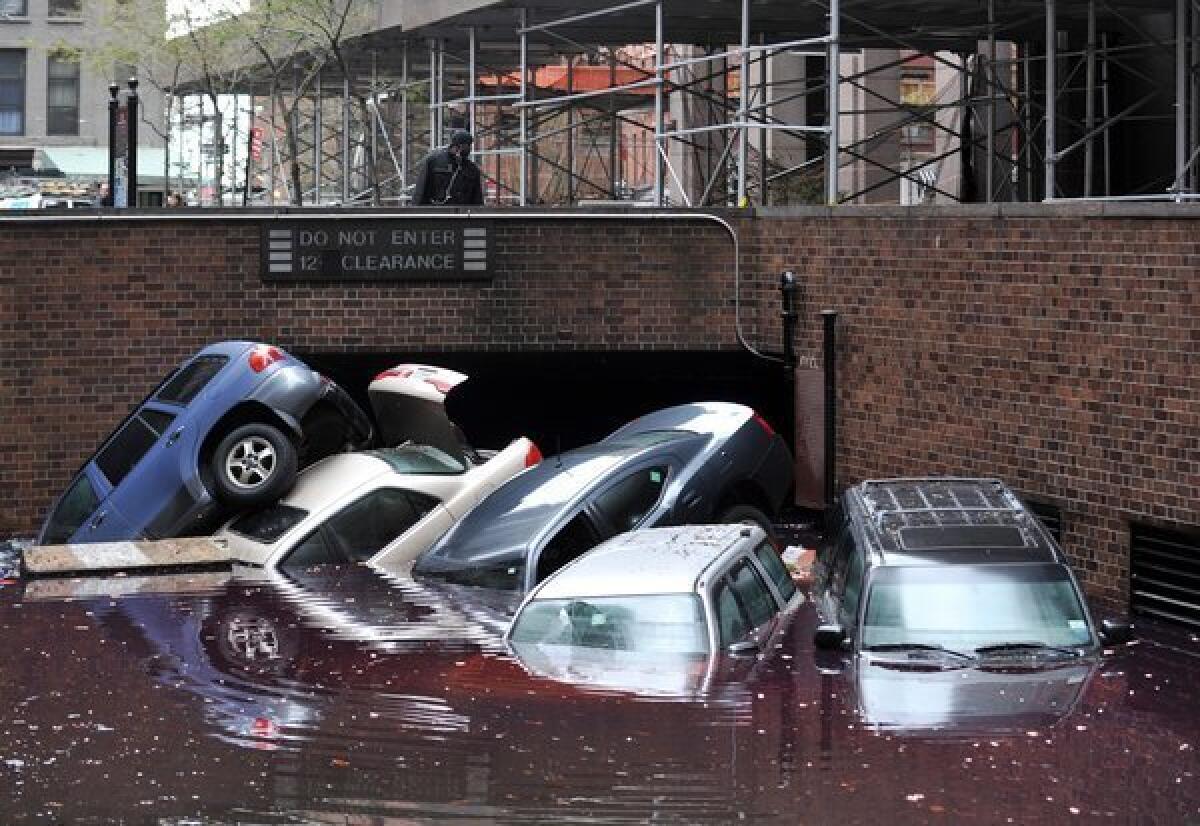Super storm Sandy washed away years of NYU scientists’ work

- Share via
As the water began to pour into lower Manhattan on Oct. 29, sliding under door frames and into basements, scientists who work in NYU’s Smilow Research Building began to realize that something horrible was happening -- something entirely separate from the loss of human life and shelter that would soon follow.
Because of the flooding, thousands of mice drowned in Smilow’s basement animal facility, which had lost power and seen its generators fail. Their loss wiped away years of careful breeding and meticulous experimental research on heart disease, schizophrenia and other diseases.
Many of the mice that drowned represented critical scientific institutional memory. They carried specific genetic mutations that made them useful models for a range of diseases and disorders. Many of the lost animals represented years of hard work.
It is difficult to overstate how fundamental research animals are to the work many scientists do, especially when those researchers are involved in developing new animal models of human disease. A friend of mine from graduate school spent six years developing a line of rats that could be used to study Parkinson’s disease; if her rodent colony had been wiped out, her thesis would have been too. So it went for some at NYU this past week.
Given Smilow’s location in a low-lying area of Manhattan along the East River, why were the animals down in the basement at all? That question is addressed in detail in a recent piece by Daniel Engber at Slate, in which he points out that a similar loss of animal life occurred in 2001, when tropical storm Allison drowned thousands of research animals in a University of Texas basement facility and 30,000 mice at Baylor’s medical school. At the time, according to Engber’s piece, the president of the University of Texas told the media that “We will never place animals or critical equipment in the basement again.” Smilow’s construction began a year later, in 2002.
A simple answer is that no one ever expected such severe flooding of Manhattan. According to the New York Times, the building was rated to withstand flood waters 20% higher than historical flooding—a sign of just how unprecedented Sandy was. Nevertheless, the fallout from the hurricane may lead coastal facilities to think twice before putting their animal research colonies in basements, especially given the continuing trend toward higher sea levels.
So what happens now for those scientists whose research subjects and materials were wiped out? A number of universities and other academic institutions, including Cold Spring Harbor Laboratory on Long Island, the University of Pennsylvania in Philadelphia, and the University of North Carolina in Chapel Hill, have offered to help reconstitute NYU’s research stock. And an organization called Science Exchange, which acts as a clearinghouse between researchers and providers of scientific materials and services, is waiving all of its fees to make it easier for affected scientists to get started with their work again.
But it’s probably going to be awhile before NYU’s research community fully recovers from the losses.
For more, see this riveting account of Sandy as experienced by an NYU researcher.
Return to the Science Now blog.



